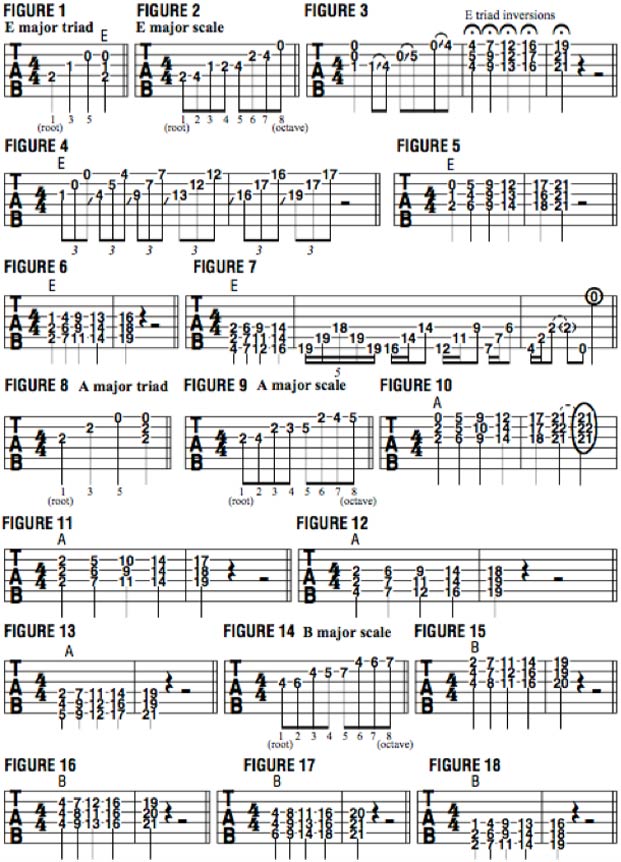Learning Major Triads All Over the Neck

A question many students have asked me over the years is, “How can I learn all the major and minor chord forms all over the neck and apply them to progressions and songs?”
The answer is it takes a lot of time and work to learn just the basic chord types—major, minor, major seven, minor seven and dominant seven—all over the fretboard in every inversion and key. The good news is that the layout of the guitar fretboard is such that specific chord shapes recur in different areas and on different string groups, so applying oneself to the study of a few of these chord types will ultimately get you a long way toward understanding and visualizing all of the other chord types that there are.
The way to begin this study is to start with major triads. As its name implies, a triad is a three-note entity, generally comprised of a root note, third and fifth. A major triad is built from the root, major third and fifth. FIGURE 1 illustrates the three notes of an E major triad: E (the root), G# (the maj3) and B (the 5).
The way to determine what the root note, major third and fifth will be based on any given note is to play a major scale starting on that note and pinpoint the third and fifth scale degrees. FIGURE 2 illustrates the E major scale played across the top four strings in first position, with each scale degree indicated. As you see, the first, third and fifth notes of the scale are the notes that form the E major triad.
Since triads are built from three notes, a systematic way to learn major triads on the fretboard is to divide the guitar strings into four groups of three adjacent strings, and then learn the three major triad shapes, or inversions, on each string group (and their octave replicas 12 frets higher). FIGURE 3 illustrates the three different E major triad inversions: G#, B, E (called first inversion because the major third is the lowest note), B, E, G# (called second inversion because the fifth is on the bottom), and E, G#, B, which is considered the root position form. The initial first-inversion shape then repeats 12 frets higher, as do the other two. One could play these triads as single notes, as shown in FIGURE 4. Now that you understand the concept, I’ve simply repeated the drill on the other string groups in FIGURES 5–7.
Let’s now address expanding our view to a chord progression, by looking at the chords of a typical 12-bar blues in the key of E. If E is the root, or “I” (one) chord, then A is the IV (four) and B is the V (five). FIGURES 8 and 9 show the notes of an A major triad and A major scale, and FIGURES 10–13 depict the triadic voicings. FIGURE 14 illustrates the B major scale, and FIGURES 15–18 present all the B major triad inversions. Be sure to memorize all of these shapes. The next step is to combine them within a chord progression.

All the latest guitar news, interviews, lessons, reviews, deals and more, direct to your inbox!
Guitar World Associate Editor Andy Aledort is recognized worldwide for his vast contributions to guitar instruction, via his many best-selling instructional DVDs, transcription books and online lessons. Andy is a regular contributor to Guitar World and Truefire, and has toured with Dickey Betts of the Allman Brothers, as well as participating in several Jimi Hendrix Tribute Tours.

